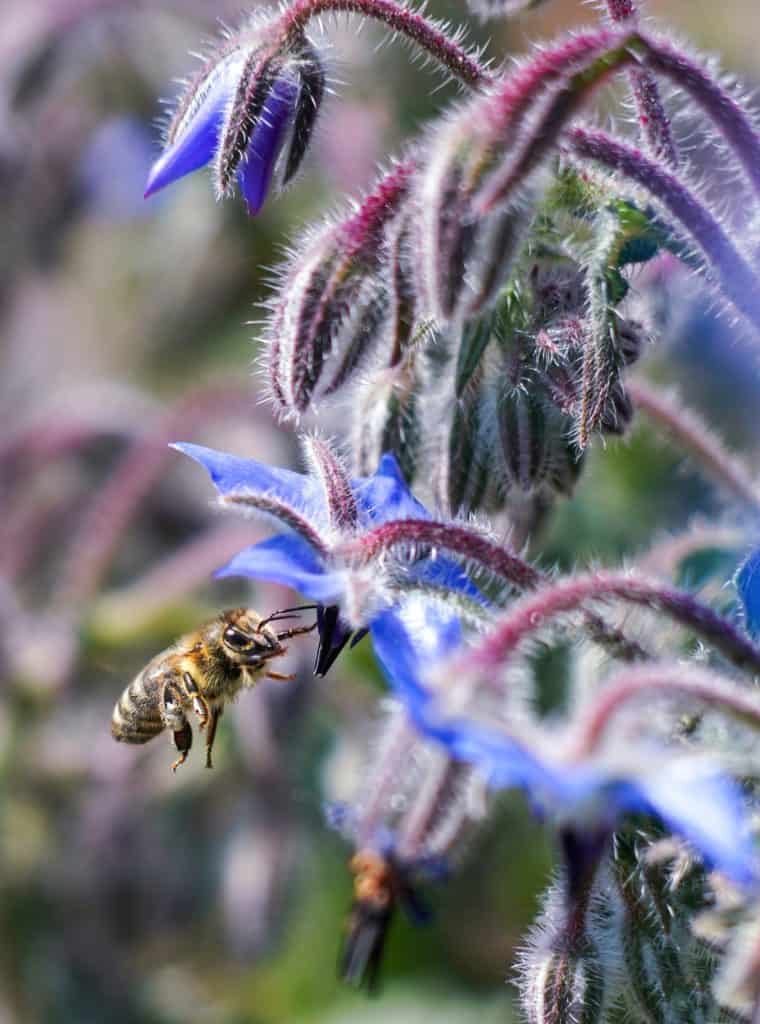
If you’re looking to add some pollinator-friendly plants to your garden, let’s talk about it because I love your idea.
There are so many plants that bees and other critters love that also happen to be great for fresh eating and even have medicinal uses. Here are four of my favorites.
Affiliate Disclosure: Some of the links in this post are affiliate links. This means that if you click on the link and purchase an item, I will receive a commission at no extra cost to you. I only recommend stuff I love and would recommend to a friend.
Calendula
Calendula is another plant that the bees love. It has beautiful orange or yellow flowers that bloom all summer long.
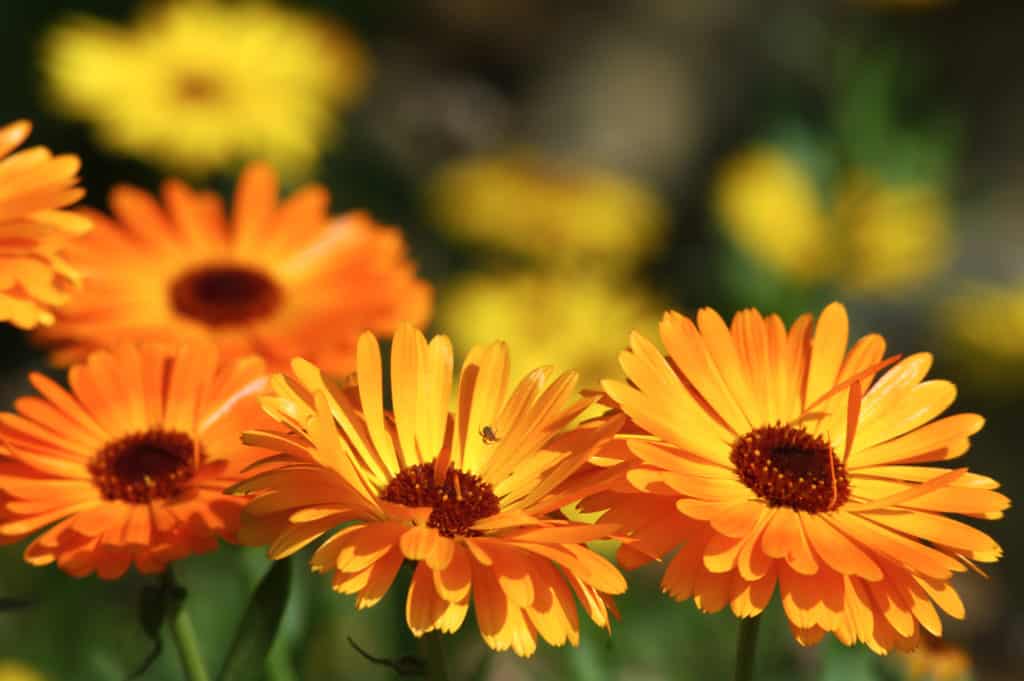 Pin
PinUses for calendula
Calendula is a plant that has a long history of use for medicinal and practical purposes. The flower heads and leaves can be used to make a healing tea, and the petals can be added to salads or used as a decorative garnish.
Calendula ointment is commonly used to treat wounds and skin irritations, and the plant is also thought to have anti-inflammatory properties. Calendula is often added to handmade soaps for a soothing effect.
In addition, calendula can be used as a natural dye for fabrics and yarns. The flowers produce a yellow-orange color when used in this way. When it comes to calendula, there are many different uses for this versatile plant.
How to grow calendula
Calendula is a cheerful little flower that blooms in a variety of colors, including yellow, orange, and red. Also known as pot marigold, calendula is easy to grow and makes a welcome addition to any garden. Here are a few tips on how to get started.
Calendula thrives in full sun and well-drained soil. To sow the seeds, simply scatter them on the ground and lightly cover them with soil. Keep the soil moist until seedlings emerge, then thin to about 10 inches apart.
Calendula is a drought-tolerant plant (perfect for me in Colorado), so once it is established, it will need very little water. In fact, too much water can cause the flowers to become floppy and misshapen. Calendula is not particular about soil fertility, but it will bloom best if given a moderate amount of fertilizer throughout the growing season.
Deadheading spent blossoms will encourage more flowering. Calendula is also an excellent cut flower and can be used in fresh or dried arrangements. Enjoy your colorful crop of calendula all season long! I love Pacific Beauty mix calendulas, they give you a really nice variety of yellow and orange tones in your garden and they’re great for soaps or salves and stuff. There’s also pink varieties, like this one that are absolutely stunning.
Borage
Here’s one I didn’t know about until I started gardening! Borage is a plant that the bees go crazy for.
 Pin
PinUses for borage
Borage has been used for centuries as both a food and medicine. The Egyptians used borage to calm nerves and relieve anxiety, and the Greeks believed that it had the power to bring courage and strength. In medieval times, borage was often used in love potions, and it was also believed to ward off evil spirits.
Today, borage is still used in some traditional medicine practices. However, its leaves are more commonly used as an herb or spice.
Borage leaves have a slightly cucumber-like flavor, and they are often used in soups, stews, and salads. Borage flowers are also edible and are often used as decoration on cakes and other desserts.
Planting borage in your garden
borage is a relatively easy plant to grow and can be direct-sown in the garden. Here are a few tips for success:
Borage prefers full sun and well-drained soil. To help with drainage, mix in some organic matter before planting. The seeds are large and easy to handle. Sow them directly in the garden in early spring, spacing them about 12 inches apart. After germination, thin the seedlings to 18 inches apart.
Borage is an annual plant and will self-seed readily. To prevent it from becoming too aggressive, remove the flowers before they set seed.
Borage is an amiable plant and makes a good companion for other garden vegetables such as tomatoes, cabbage, and squash. It also attracts bees and other beneficial insects to the garden.
With a little care, borage will provide you with beautiful blooms all summer long. Borage is a fast-growing plant and will begin to bloom in as little as 60 days. This herb can self-seed prolifically, so be sure to deadhead spent flowers if you don’t want it to take over your garden beds!
Grab some borage seeds on Amazon pretty much year-round or over at a seed store like Baker Creek or MI Gardener if they are in stock. True Leaf Market is another place to check for organic seeds all year round. They sell seeds in bulk as well.
Nasturtiums
Nasturtiums are unique-looking plants that I’m obsessed with every time I grow them. Not only do they look cool, but they’re also pretty easy to grow and they’re perfect for adding pops of color to your garden.
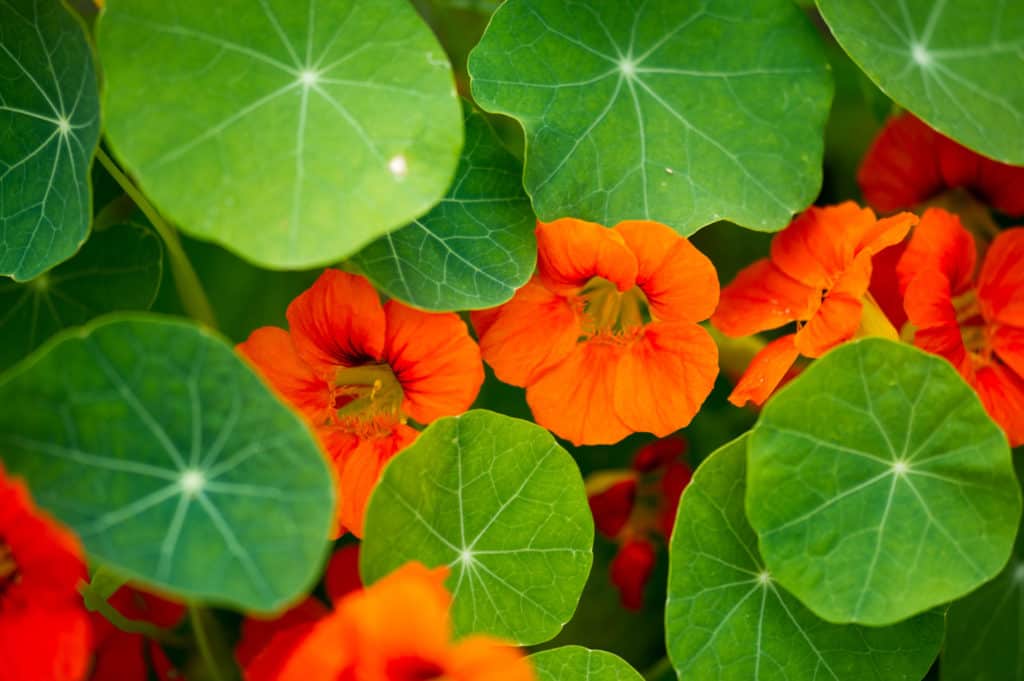 Pin
PinUses for nasturtium
Nasturtiums are a well-known and well-loved plant often found in cottage gardens and on urban balconies. The flowers are edible and are a cheerful addition to salads, while the leaves can be used in pesto or as a substitute for watercress. Nasturtiums are also a good source of vitamin C, and their peppery flavor makes them an ideal garnish for soup or fish.
Nasturtium leaves are sometimes used in salads or as wraps in lieu of tortillas. Seriously – check out these recipes using nasturtium leaves!
In addition to their culinary uses, nasturtiums can also be used for their medicinal properties. The leaves have historically been made into a poultice to treat wounds, and the flowers can be infused to make a tea that is rich in antioxidants. With so many uses, it is no wonder that nasturtiums have been a popular garden plant for centuries.
Nasturtiums are sometimes used as a trap crop that will lure harmful bugs away from your vegetables. I plant a ton of them because they’re so loved by the pollinators and I think they take my garden to a whole different level, visually speaking.
How to grow nasturtiums
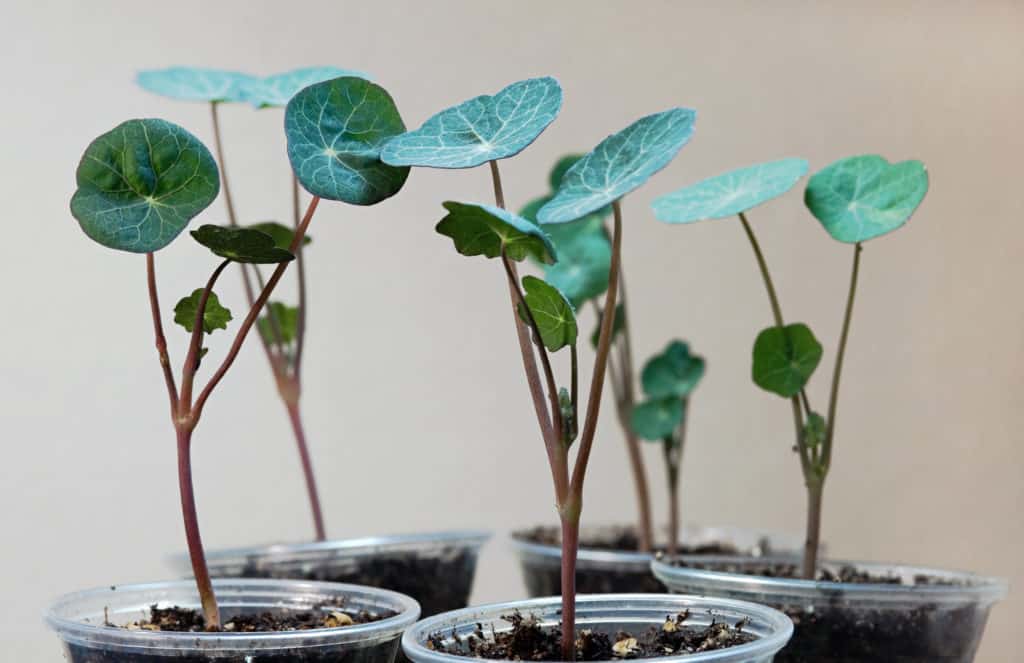 Pin
PinNasturtiums are one of the easiest flowers to grow, making them a great choice for beginner gardeners. They thrive in sunny locations and well-drained soil, and they don’t require much in the way of maintenance.
To get started, simply sow the seeds directly into the ground in early spring. Some people prefer to scour or soak nasturtium seeds before planting them since the seeds are on the larger side. Once they have germinated, thin out the seedlings so that they are spaced about 10 inches apart.
Water regularly, especially during dry spells, and fertilize every few weeks with a general-purpose fertilizer. Nasturtiums will bloom from summer through to fall, and they make an excellent addition to both beds and borders. My nasturtiums just started blooming a few days ago here in Colorado and it is early July.
With their vibrant flowers and trailing foliage, they are honestly quite visually stunning. Trailing nasturtiums are a really fun way to have plants overflowing out of your garden beds and containers.
There are so many kinds of nasturtiums out there but I love regular old garden nasturtiums. Trailing varieties bring the wow factor, as do varieties with variegated leaves.
Chives
Chives are a super popular herb, but the flowers they produce are loved by pollinators and I enjoy letting some of my chives go to flower every season to watch the bees go to town on them. They’re thought of as a staple to your herb garden, but I wanted to add them to this list of pollinator-friendly plants because they can do a lot for the bees, too.
 Pin
PinUses for chives
Chives (Allium schoenoprasum) are a member of the onion family, and they have a similar flavor profile. They can be used fresh or dried, and they are a common ingredient in many recipes.
While they are often used as a garnish, chives can also add flavor to soups, salads, potato dishes, and more. When substituting chives for onions, it is best to use them sparingly, as their flavor is much more potent.
Chives can also be used for their medicinal properties. They are known to boost the immune system, aid in digestion, and relieve congestion.
In Chinese medicine, chives are often used to treat digestive issues and respiratory infections. Whether you’re using them in the kitchen or the medicine cabinet, chives are a versatile and flavorful addition to your home.
Growing chives
Chives are easy to grow from seed, and they will last for several years if given the proper care and correct growing conditions. Here are some tips on how to get started.
To grow chives from seed, start by planting the seeds in a sunny spot in your garden. Chives prefer well-drained soil and will do best if they are planted in raised beds or pots.
Once the seeds have germinated, thin the plants so that they are about 6 inches apart. Water regularly, and fertilize monthly with an all-purpose fertilizer. When the chives are about 6 inches tall, you can begin to harvest them by cutting the leaves with a sharp knife.
To keep the plants from getting too leggy, trim them back by half every few weeks. With proper care, your chives will provide you with fresh herbs for many years to come.
To let some of your chives go to flower, just stop cutting them and the gorgeous purple or white blooms will appear, which the bees will certainly appreciate.
Other pollinator-friendly plants to try
So, I’m running out of time for this blog post, but I want to list some more pollinator-friendly plants that you could try growing in your garden. Here are some more suggestions and hopefully, I can expand this post later with more information about each of them.
- Sunflowers
- Buckwheat
- Sweet Alyssum
- Baby’s Breath
- Lavender
- Basil
- Parsley
- Thyme
- Rosemary
- Echinacea (Coneflower)
- Hyssop
- Salvia
Pollinator-friendly plants are a great way to help support your local bee population, and they can also add some beautiful visual interest to your garden. But I understand that these days it’s critical to get as many edible items out of your garden as possible.
I’ve provided you with four pollinator-friendly plants that are easy to grow, and I hope you’ll consider adding one or more of them to your garden this season. The bees could use the help! Thanks for reading! Comment with your fav pollinator-friendly plants. 🙂
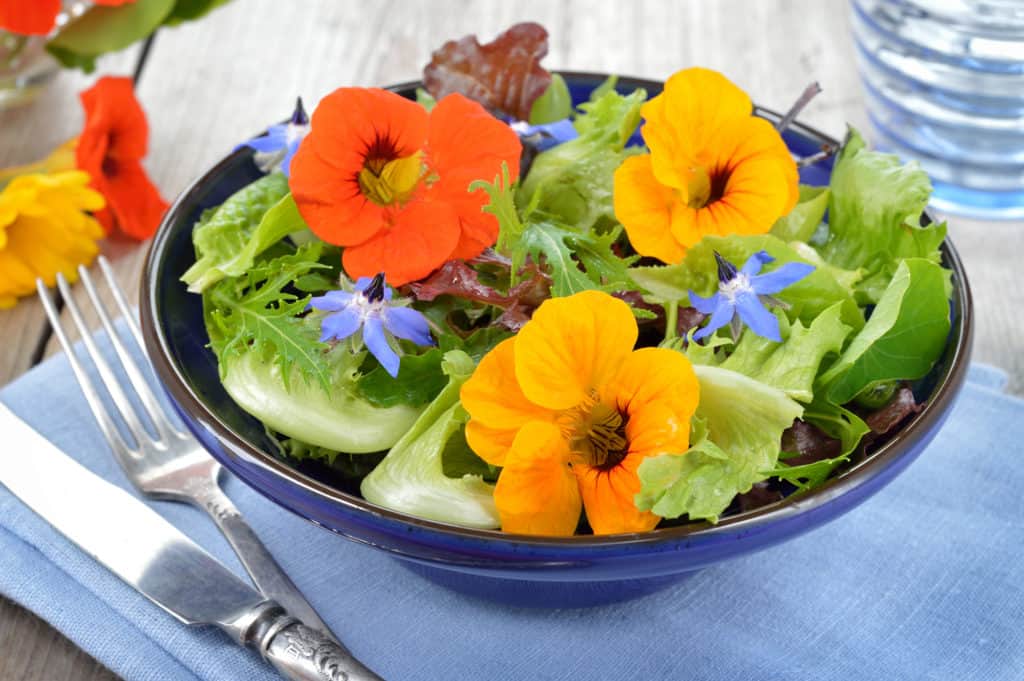 Pin
PinMore reading:

